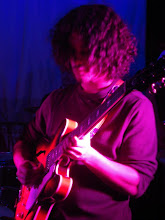I had an idea. I wanted to find out just how much new material working on all these studies had created. How many voicings did they contain which I had honestly never played before and had discovered as I was writing them? Well the answer was actually less than I expected even though it sounds like a lot: 38. The reason this surprised me was because I’d already had almost 30 by the time I was done the first study, the always aptly named All The Things You Are.
If I had generated so little new material while creating all the following studies, why was it that they all felt fresh and as if I was constantly coming up with new voicings? The answer is that I was recycling voicings, but not only in different keys, I was also changing their function. This strange voicing sounds bright on a Cmaj7 in All The Things You Are, but dark on Am(maj7) in Blue In Green.
This shouldn’t surprise me because I wrote and thought a lot about how this is the “green” way to use new material. Yet it wasn’t a point I had consciously set out to illustrate in the studies, however I recognize my following my own advice in hindsight.
So why Ted meets Mick? Well, if you’ve ever opened a Ted Greene book, you’ve been overwhelmed and quickly exhausted by the amount of material within. Nevertheless, something should be said for the systematic layout of the material using chord diagrams, not tabs or sheet music.
If you’ve opened up Mick Goodrick’s Voice-Leading Almanacs, then you also know that the same musical information can be applied and combined in ways with other information which no longer make it sound the same.
Seriously, have you ever tried cataloguing your knowledge? I just did, and I got an answer: 38 (plus probably another 30-40 voicings which I ignore because they’re very basic or I’ve been using them for a long time and know who they came from). It’s kind of liberating.
The Voice-Leading Almanac volume II is called “Don’t Name That Chord.” It deals with clusters and fourths which defy easy tonal categorization. But really, this is a good idea for any and all chord voicings we have. An Em7 is a Cmaj9 is a Am11 is a Dbm7(b9b5). So when I made my charts of all the interesting chords I’ve been experimenting with, I purposefully didn’t give them any names or write down what key I originally used them in or anything like that. All I’ve got is a bunch of ambiguous blobs on an undefined area of fretboard.
Now, my job is to take each of these chords and play with them. Rather than only deciding that a chord is a Cmaj7 and then going through all the songs where Maj7 chords are and using it there, I’m going to try and look at each voicing with an open mind. What could this voicing be? Could it also be a m7b5 voicing? Well, let me see where I can use it in that context. Let me see how I can take 38 and turn it into 380 without ever creating a genuinely new shape or intervallic structure.
However, if I were going to try and find new shapes, I think my next step, following in those of Mick Goodrick, would be to plane any and all of these shapes modally through major and melodic minor.
Subscribe to:
Post Comments (Atom)

No comments:
Post a Comment